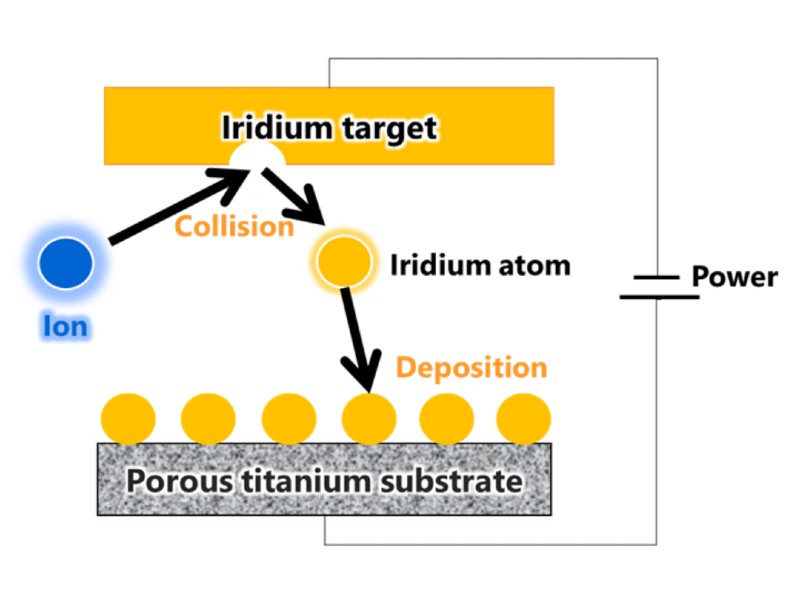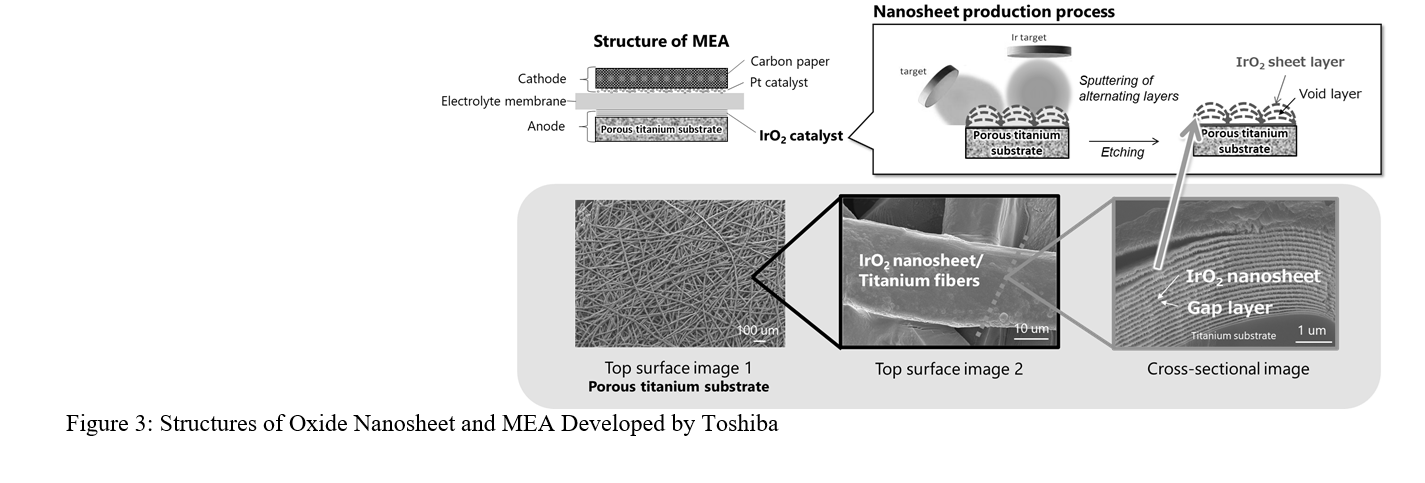 Toshiba’s multilayer catalyst uses a new sputtering technology. Credit: Toshiba
Toshiba’s multilayer catalyst uses a new sputtering technology. Credit: Toshiba
Tokyo-based Toshiba Corporation has developed new technology that helps to improve the efficiency and potentially the commercial viability of Power-to-Gas (P2G) energy production.
P2G uses the electrolysis of water to convert renewable energy into hydrogen for storage and transport. However, current methods require the use of iridium, one of the world’s rarest precious metals to be used as a catalyst in electrodes.
Toshiba has developed new electrodes which enable P2G while using 1/10th the amount of iridium as previous methods, which according to the company could reduce barriers to commercialisation of the technology.
The technology
Polymer Electrolyte Membrane (PEM) electrolysis uses a membrane electrode assembly (MEA) that integrates the electrolyte membrane and electrode (Fig. 1). Large-scale hydrogen conversion of electricity requires a large number of MEAs.
 Image credit: Toshiba
Image credit: Toshiba
However, the MEA electrode relies on a large amount of iridium to ensure sufficient electrolytic efficiency. Forming electrodes requires a uniform coating of fine iridium oxide particles, according to Toshiba, but reducing the iridium oxide results in uneven application and non-uniform reactions that degrade water electrolysis performance.
Toshiba’s multilayer catalyst uses a new sputtering technology (lead photo) to deposit alternate layers of iridium oxide nanosheet films and void layers (Fig. 3).
In Toshiba’s process, iridium is the target, and a thin film of iridium oxide is formed by injecting oxygen as the target is deposited on the substrate. Thickness control is at the nanometer level, realizing deposition of uniform iridium oxide layers of with a smaller amount of iridium.

Thickness control is at the nanometer level, realizing deposition of uniform iridium oxide layers of with a smaller amount of iridium.
Using the laminated nanosheet structure in the catalyst layer successfully reduces the required iridium to 1/10, while maintaining the water electrolysis performance.
In collaboration with Toshiba Energy Systems & Solutions Corporation, Toshiba has built MEA prototypes with electrodes based on the developed technology, and has begun evaluation testing with a water electrolyzer manufacturer.
Going forward, the Company will improve the yield and quality toward mass production of MEA, aiming for commercialisation in FY2023 or after.


